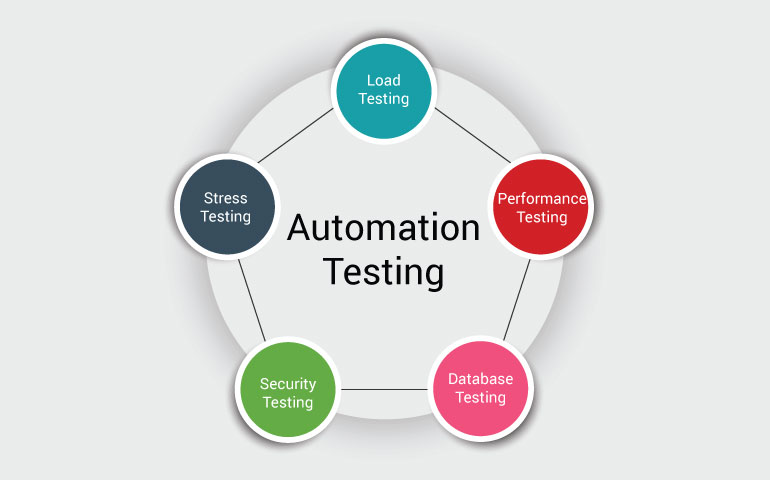The Relevance of Automation Testing in Agile Advancement Settings
The Relevance of Automation Testing in Agile Advancement Settings
Blog Article
From Manual to Automated Testing: A Comprehensive Overview to Transitioning Efficiently and Properly
In the realm of software screening, the shift from manual to automated processes has actually become a progressively essential shift for companies seeking to improve efficiency and precision in their screening methods. The trip from manual to automated screening is not without its challenges, however when come close to tactically and with a clear strategy in mind, the benefits can be considerable.
Advantages of Automated Evaluating
Automated screening offers many benefits, enhancing effectiveness and precision in software growth processes. One main advantage is the substantial reduction in testing time. Automated examinations can be run at the same time on numerous tools and running systems, drastically quickening the testing stage contrasted to hand-operated testing. This enhanced effectiveness permits faster responses on the top quality of the software program, enabling designers to determine and attend to concerns promptly.
Additionally, automated testing guarantees a greater degree of accuracy in detecting issues. Uniformity in testing is additionally boosted, as automated tests execute the very same steps precisely each time they are run.
Selecting the Right Tools

First of all, analyze your demands and purposes. Understand the extent of your project, the modern technologies entailed, and the ability of your group. This evaluation will help you establish the functions and capacities you require in your testing devices.
Secondly, consider the compatibility of the devices with your existing processes and systems. Seamless assimilation with your present software application growth lifecycle is important to guarantee a smooth transition to automation.
In addition, examine the scalability and flexibility of the devices. As your testing requires progress, the tools need to have the ability to adapt and accommodate changes effectively.
Last but not least, consider the assistance and community around the tools. Robust assistance and an active user community can provide important resources and aid when applying automated testing. By thoroughly considering these elements, you can pick the right devices that line up with your needs and set the stage for an effective transition to automated testing.
Writing Efficient Examination Manuscripts

When crafting test scripts, it is important to take into consideration the particular needs of the software program being evaluated and make certain that the scripts resolve all vital functionalities. Detailed and clear naming conventions for examination scripts and examination cases can improve readability and maintainability. In addition, incorporating mistake handling mechanisms within the examination scripts can assist in recognizing and dealing with concerns promptly.
Moreover, arranging examination scripts into modular parts can improve reusability and scalability, decreasing redundancy and improving efficiency in examination manuscript upkeep. Regular testimonials and updates to test scripts are vital to maintain pace with progressing software demands and performances. By adhering to these concepts, testers can create robust and effective test scripts that contribute substantially to the success of automated screening procedures.
Integrating Automation Into Workflows
By perfectly incorporating automated testing devices like Selenium or Appium into the software advancement lifecycle, teams can accomplish faster feedback on code changes, leading to quicker insect discovery and resolution. This integration permits for continual screening throughout the development procedure, making certain that any issues are identified early on, resulting in go to website higher software application top quality. Proper combination of automation devices requires partnership between growth, testing, and operations teams to establish a unified process that maximizes effectiveness and performance in providing high-grade software products.
Guaranteeing a Smooth Change
Successfully transitioning to automated testing includes thorough planning and mindful implementation to make the most of and minimize interruptions performance in the software advancement procedure - automation testing. To make sure a smooth change, it is vital to begin by performing a comprehensive evaluation of the present testing processes and identifying areas where automation can bring the most significant benefits. Engaging with all stakeholders at an early stage while doing so, including developers, testers, and project managers, is essential for garnering support and buy-in for the automation campaign
Interaction is vital throughout this change stage. Clear interaction of the goals, benefits, and expectations of automated screening aids to take care of any type of resistance or worries that may occur. Additionally, providing adequate training and sources for team participants to upskill in automation devices and methods is important for guaranteeing a successful change.

Verdict
In verdict, transitioning from manual to automated testing offers various benefits, including enhanced effectiveness and dependability. By choosing the suitable tools, composing efficient test scripts, and integrating automation perfectly into process, organizations can guarantee a successful and smooth transition. It is vital to embrace automation as an important possession in software testing procedures to boost general high quality and efficiency.
In the advice realm of software application testing, the shift from guidebook to automated procedures has ended up being a progressively vital transition for companies seeking to enhance performance and precision in their testing practices. Automated examinations can be run all at once on multiple tools and operating systems, substantially speeding up the testing phase compared to hand-operated testing. Uniformity in screening is also boosted, as automated tests perform the very same steps specifically each time they are run.To make sure important source the successful application of selected screening tools, the production of efficient examination scripts plays a vital role in verifying the functionality and efficiency of automated processes - automation testing. By complying with these principles, testers can develop robust and reliable test manuscripts that contribute substantially to the success of automated testing procedures
Report this page